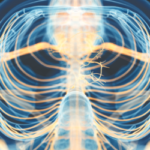PHILADELPHIA—Activation of innate immunity can be a double-edged sword. In most cases of infection or injury, cytokine production leads to recovery and protection against further tissue damage. But the production of cytokines can go awry, as is seen in proinflammatory disease. What triggers this dysregulation of the inflammatory response? We may be getting close to decoding the mystery.
In the last decade, discoveries in animal as well as human models of inflammation have led to new constructs about the interconnectedness of the central nervous system (CNS) and the immune system. As a result, said Kevin J. Tracey, MD, director and chief executive of the Feinstein Institute for Medical Research in Manhasset, N.Y., “the immune system can no longer be regarded as autonomous.”
Dr. Tracey’s opening remark encapsulated the theme for three talks presented at the session, “Neuroimmunology Signaling Cross-Talk,” here at the 2009 ACR/ARHP Annual Scientific Meeting. [Note: This session was recorded and is available via ACR SessionSelect at www.rheumatology.org.] He and his fellow presenters summarized their investigations that have expanded our understanding of the pro- and antiinflammatory pathways. The potential now exists, they said, to block the proinflammatory process with novel therapeutic approaches.
Motor Arm of Antiinflammatory Pathway
“We’ve known for many years that the nervous system senses cytokines,” said Dr. Tracey, who opened the session. “What both infectious disease and sterile injury have in common is that they both can release molecules that signal the activation of innate immunity through highly conserved endogenous inherited receptors.” Inflammatory mediators activate the nervous system by flowing through the bloodstream and leaking through the blood–brain barrier or by local production of cytokines in the brain. In the last decade, discoveries in the labs of Dr. Tracey and other investigators have revealed a third route by which inflammatory mediators can activate the nervous system: the vagus nerve. Via the neurotransmitter acetylcholine, the vagus nerve allows the brain to communicate with the immune system in “real time.” The cholinergic antiinflammatory pathway functions as the “motor arm” of innate immunity, said Dr. Tracey, who is credited with its discovery.
His laboratory’s findings had their beginnings in studies conducted by Linda Watkins in the late 1990s, when she caused a fever response in rats by injecting interleukin-1 into their abdomens. When she severed the vagus nerve, the rats developed no fever response. From these results, Dr. Tracey and his colleagues reasoned that perhaps there was a sensory arm of the inflammatory reflex that would predictably inhibit cytokine production. In a rat endotoxemia model, the team found that direct electrical stimulation of the vagus nerve inhibited tumor necrosis factor (TNF) synthesis in the liver and prevented the development of shock in the animals.1


